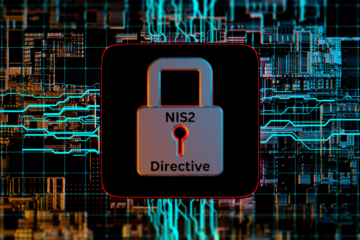Hey there, let’s talk about the EU Cyber Resilience Act (CRA)!
Are you ready for a game-changer in cybersecurity? The EU Cyber Resilience Act (CRA) is here to ensure that all digital products sold in the European Union are equipped with robust cybersecurity measures. Say goodbye to digital threats and hello to a safer, more trusted digital landscape!
Mark your calendars for 10 December 2024 when the CRA comes into force. By December 2027, most obligations will be in full effect, setting the bar high for manufacturers, importers, and distributors. Let’s dive into what this groundbreaking regulation means for businesses like yours and how you can stay compliant.
Let’s Talk Scope – What Does the EU Cyber Resilience Act Cover?
The CRA is all-encompassing, applying to all products with digital elements on the EU market. From smart home devices to industrial control systems, this act is here to ensure that cybersecurity is a top priority across all industries.
Unlocking the Potential of Smart Home Devices
Smart home technology is awesome, but it also comes with risks. Thanks to the EU Cyber Resilience Act, smart thermostats, security systems, and appliances will now have top-notch security features to keep hackers at bay.
Elevating Wearable Technology to New Heights
Wearable devices are cool, but they also collect a ton of personal data. With the CRA, manufacturers must amp up security measures to protect user data from prying eyes.
Securing the Backbone of Critical Sectors – Industrial Control Systems
Industrial control systems are the lifeline of critical sectors. The CRA mandates enhanced security measures to safeguard these systems from cyber threats that could wreak havoc on public safety.
Ensuring Software Applications are Fortified
Software applications, whether standalone or embedded, must meet rigorous cybersecurity standards under the EU Cyber Resilience Act. Developers, brace yourselves for some intense security requirements!
Building a Strong Foundation with Hardware Components
Foundational vulnerabilities are no match for the CRA. Hardware components like processors and network devices are all covered, ensuring that cybersecurity starts at the core of digital products.
Let’s Talk Compliance – How to Meet the CRA’s Requirements
Conformity assessment is key to meeting the CRA’s cybersecurity requirements. Remember, high-risk products will face stricter assessments, so be prepared!
- Risk-Based Approach: Assess the risk level of your product for tailored scrutiny.
- CE Marking: Affix the CE marking to show compliance with EU standards.
- EU Declaration of Conformity: Declare how your product meets the CRA requirements.
What’s Expected of You – Obligations Under the EU Cyber Resilience Act
For Manufacturers
- Security by Design: Integrate cybersecurity throughout the product lifecycle.
- Technical Documentation: Keep detailed records to prove compliance.
- Incident Notification: Report incidents promptly to the authorities.
- Updates: Provide security updates regularly.
For Importers and Distributors
- Compliance Checks: Ensure products meet CRA requirements before marketing.
- Documentation Retention: Keep records for audits and inspections.
- User Support: Provide cybersecurity resources to consumers.
Enforcement and Consequences – What Happens if You Don’t Comply?
The EU Cyber Resilience Act means business. National Market Surveillance Authorities will enforce compliance through regular checks and penalties for non-compliance, including hefty fines and product removal from the market.
Time to Act – Key Dates for the EU Cyber Resilience Act
- 10 December 2024: The CRA kicks off.
- September 2026: Incident notification requirements begin.
- December 2027: Most CRA obligations take effect.
Ready to Get Compliant? Here’s How!
1. Assess Applicability
Figure out if the CRA applies to your products and what you need to do.
2. Conduct a Cybersecurity Audit
Identify vulnerabilities and ensure compliance with the CRA.
3. Update Product Documentation
Keep technical documentation current and aligned with CRA requirements.
4. Implement Security by Design
Integrate cybersecurity measures into product development for CRA compliance.
5. Establish Incident Reporting Protocols
Set up protocols for reporting incidents promptly.
6. Train Your Team
Equip your team with the skills to maintain compliance and address risks effectively.
In Conclusion – The EU Cyber Resilience Act in a Nutshell
The EU Cyber Resilience Act is a game-changer in cybersecurity, prioritizing safety and trust in the digital world. By complying with the CRA, you not only avoid penalties but also boost your brand reputation as a security-conscious organization.
At Formiti, we offer tailored project services to support your CRA compliance journey. From cybersecurity audits to security by design strategies, we’ve got you covered. Our Outsourced Data Protection Officer (DPO) Services provide expert guidance to keep you compliant and resilient. Reach out to us today to navigate the EU Cyber Resilience Act with confidence!



